Understanding Hornets in Bathroom Vents: A Detailed Analysis
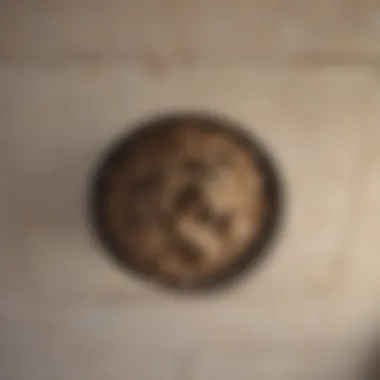
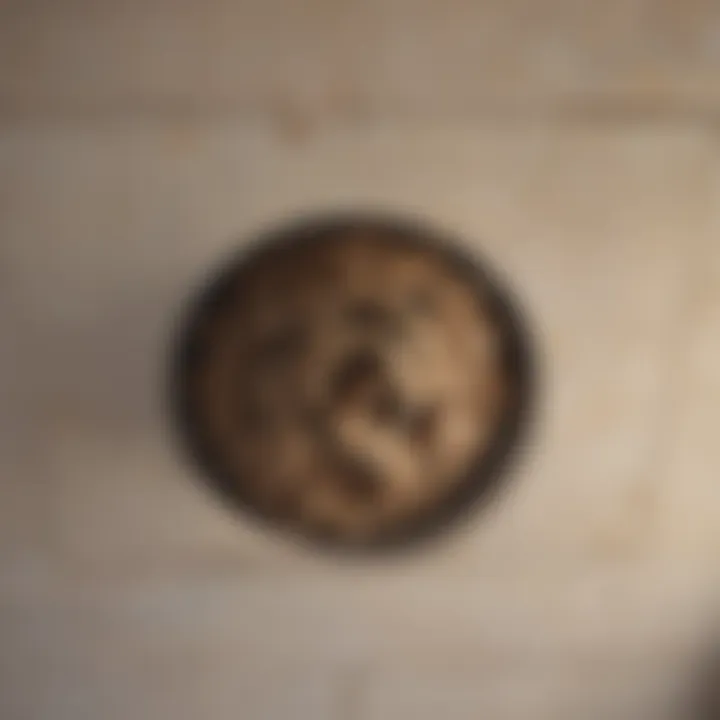
Intro
Hornets, those buzzing insects that strike both fear and awe, have a peculiar tendency to build nests in some unexpected places. Recently, one area has garnered particular attention: bathroom vents. The idea of hornets creating a haven in such an unlikely spot raises questions about their behavior, the conditions that allow for this phenomenon, and the implications for homeowners.
For many, the mere thought of sharing living space with such stinging visitors can be disconcerting. Moreover, there's a need to understand the ecological role of hornets, even when they intrude into our private spaces. While they aren’t always harmful, their presence can indeed pose risks, making it crucial to explore effective removal strategies.
Throughout this article, we will dive into the complexities surrounding hornets in bathroom vents, shedding light on the behaviors of these insects, the reasons behind their intrusion, and what can be done to mitigate the problem. By the end, homeowners will be equipped with the knowledge necessary to not only manage any hornet-related issues but also foster a safer and more congenial home environment.
Design Inspirations
When we think about bathrooms, the last thing that comes to mind is hornets. However, considering the design elements where these insects could thrive helps in understanding their choice of location. Bathrooms, often warm and moist, create a perfect breeding ground for various pests, including hornets.
- Latest Trends in Bath and Bedroom Design
Comfort and functionality coexist in modern bathroom designs, driving homeowners to make choices that enhance their living spaces. The appeal of spa-like environments has grown, prompting some to invest in ventilation systems that ensure airy circulation while harnessing the soothing ambiance of water features.If thought is not given to the upkeep of the vent system, however, it can inadvertently become a welcoming spot for hornets, who appreciate the warmth and potential access to water. Prioritizing regular maintenance and ensuring ventilation systems are not obstructed or unchecked is essential to thwart hornet invasions. - Color Palettes and Themes
While hornets may not have specific design “preferences,” they naturally gravitate towards spaces that have elements conducive to nesting. Neutral colors mixed with brighter accents create soothing environments that often attract humans but can inadvertently attract pests as well, especially if food and waste are not properly managed.
The designs that employ sustainability often attract not just people, but also the creatures of nature, including hornets, which may inhabit unnoticed areas.
Functional Elements
In a bathroom meant for relaxation, functional space management is crucial. It enhances the usability of the space while minimizing any unwanted infestations, including hornets.
- Space Optimization Tips
Enhancing bathroom efficiency can deter hornets by reducing clutter and maintaining clarity in your organization. A clean, spacious environment minimizes hiding spots and enhances ventilation, making the bathroom less appealing to pests. This includes: - Multi-Functional Furniture Choices
Choosing furniture that serves multiple purposes can save space and make areas less stuffy, contrary to what hornets may find appealing. Sustainable materials with tight seals can further safeguard against pests. For instance, wall-mounted storage units may not only look sleek but also free up valuable space that could inadvertently provide shelter or access points for hornets.
- Regularly emptying out trash bins
- Keeping surfaces dry and free of food debris
- Using storage solutions that limit free-standing objects
"Understanding hornets and their behaviors enriches our ability to create living spaces that are both pleasant and pest-free."
As we explore deeper into the factors influencing hornet presence within bathroom vents, remember that a proactive approach can mitigate risks while contributing to a more pleasant home atmosphere. Maintaining awareness of your surroundings, especially in tucked-away areas like bathroom vents, ultimately aids in preserving the sanctuary that your home should provide.
Preface to Hornets
Understanding hornets is not merely an academic pursuit; it's a matter of practical importance for every homeowner. The presence of hornets in bathroom vents can turn a tranquil home into a source of anxiety. This section sets the stage for an in-depth exploration of hornets, highlighting their behaviors, habitats, and the challenges they pose when they invade our spaces. As homeowners, being informed about these insects, especially in unexpected places like bathroom vents, can save one from significant distress and potential harm.
Defining Hornets
Hornets, unlike their more common cousins, wasps, and bees, hold a unique position within the insect kingdom. These large, robust members of the family Vespidae can be easily identified by their elongated bodies and conspicuously bold coloration. Generally, hornets are social insects, living in organized colonies led by a queen. Each colony operates like a well-oiled machine with distinct roles – workers forage for food, while others maintain the nest or care for the larvae.
Nests vary in size and shape, often constructed from chewed wood fibers mixed with saliva, giving them a papery appearance. A hornet’s sting can be quite painful, and it’s distinct from that of a bee in that hornets can sting multiple times. Understanding these attributes is crucial when handling an infestation, particularly in domestic environments like bathroom vents, where unexpected encounters can lead to anxiety and potential hazards.
Species Overview
Among the myriad species of hornets, several are commonly encountered, particularly in domestic settings. The bald-faced hornet, known for its striking white markings, is notorious for its aggressive behavior, especially when its territory is threatened. Another prevalent species is the European hornet, slightly larger and known for its preference for wooded areas.
These species can be distinguished not just by appearance but also by their nesting habits.
- Bald-faced hornets build aerial nests, often found in trees or shrubs, but can sometimes find their way into the intricate spaces of open vents.
- European hornets prefer cavities or hollow spaces, making homes within attics or wall voids but showing a penchant for bathroom vents as well.
With growing urbanization, interactions between humans and hornets are on the rise, making it paramount to understand the specifics of each species, their life cycle, and environmental preferences. This knowledge equips homeowners with the insights necessary to manage their presence effectively.
Hornets' Natural Habitat
Understanding the natural habitat of hornets is vital for grasping why they might choose bathroom vents as their new digs. These insects aren't just wandering aimlessly; they thrive in environments that align with their biological and ecological needs. The blend of temperature, humidity, and available resources creates the perfect storm for their presence in our homes.
Ideal Environment
Hornets, particularly species like the European hornet and the bald-faced hornet, prefer locations that provide shelter and access to food. An ideal environment for hornets consists of:
- Warmth: Hornets are cold-blooded. Therefore, they seek out warmer locations, especially during colder months or in early spring.
- Moisture: Bathrooms, known for their humidity, are attractive to these pests. The moisture can assist in nest-building and maintaining their eggs.
- Food Sources: Hornets are omnivorous. They are naturally inclined to areas where protein sources like flies, caterpillars, or even sugary substances are found. Open windows and food remnants can easily draw them in.
The need for nesting in a protected environment leads them to look for crevices and hidden spots—much like the secluded corners of bathroom vents. The contrast of a buzzing hive of activity outside and a false sense of calm within a home's confines makes for an alluring stopover.
Ventilation Systems Explained
Ventilation systems are not just crucial for air exchange; they also unwittingly serve as corridors for various pests, including hornets. Understanding how these systems function offers insight into how hornets navigate into our bathrooms.
- How Ventilation Works: At the core, a ventilation system helps circulate air throughout the house. It can involve exhaust fans, air ducts, and vents, all working together to maintain a healthy climate.
- Entry Points:
- Attractive Conditions: Once inside, these systems can provide warmth and moisture, mimicking the hornets' natural habitat. A clogged vent or broken duct can only amplify the chance of a hornet invasion as stagnant air gathers, creating a breeding ground for pests.
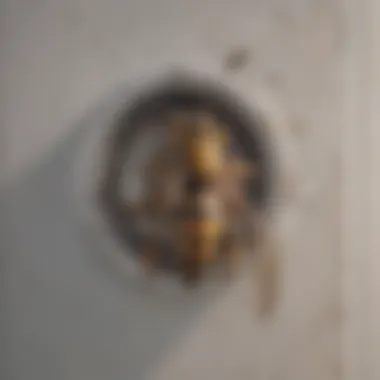
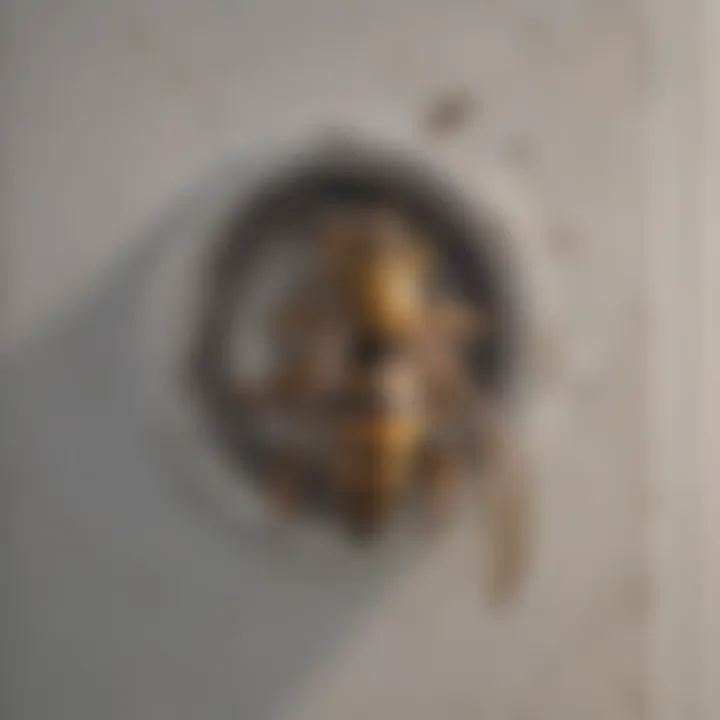
- Bathroom vents, often overlooked, can become the entry points for hornets, especially if they are improperly sealed.
- Spaces in ducts created by wear and tear can unintentionally invite hornets into the home.
"The buzz of hornets might just be the warning sign we ignore until it becomes a full infestation."
In sum, the natural habits of hornets blended with the mechanical layouts of ventilation systems make for an intricate dance. Appreciating this relationship aids homeowners in not only understanding the problem but in also strategizing practical preventative measures.
The Attraction to Bathroom Vents
The allure that bathroom vents hold for hornets is multifaceted, intertwining environmental factors and behavioral patterns. At first glance, it might seem peculiar that these insects would choose a bathroom vent as a sanctuary or nesting ground, but a closer inspection reveals a variety of elements that draw them in. Understanding these factors is crucial for homeowners to effectively address and mitigate hornet infestations in their homes.
Understanding the Appeal
Warmth mixed with humidity creates a cozy atmosphere, much like a bonus room for hornets. Bathrooms naturally offer a warm, moist environment, especially when steam travels through the vents after a hot shower. This warmth doesn’t go unnoticed by hornets, inviting them to set up shop in places that provide comfort and ease for brood-rearing.
Additionally, the materials found in and around bathroom vents often provide a source of food. Dried insect fragments, mold, and even bits of hair can serve as appealing snacks during their quest for nourishment. Moreover, the quiet, sheltered aspects of vents provide a less invasive environment for hornets to thrive, far removed from the hustle and bustle of outside conditions that might otherwise threaten their existence.
"A bathroom vent can be like a five-star resort for hornets, blending warmth and nutrition in a clandestine setting."
Common Entry Points
Identifying how hornets can sneak into bathroom vents is essential for prevention. Here are some of the common entry points that homeowners should be aware of:
- Cracks and Gaps: Tiny openings around the vent can offer sufficient access for hornets. Look for cracks in the sealant or gaps in the vent covers.
- Damaged Screens: If bathroom vents feature screens, any tears or holes in these shields can act like open doors. Maintaining the integrity of these coverings is vital.
- Exposed Ductwork: In some instances, ductwork leading to the bathroom may not be properly sealed. This lack of sealing can create tunnels leading straight from outside to the warm confines of the bathroom.
- Open Windows or Doors: Hornets also could wander in through open windows or doors, especially in the late summer and autumn months when they are most active.
In addressing the issues surrounding hornets in bathroom vents, understanding these entry strategies becomes foundational. By sealing off potential access points, homeowners can often prevent hornets from moving into their spaces in the first place.
Identifying Hornet Infestations
Identifying hornet infestations is crucial for homeowners looking to maintain a safe and healthy environment within their homes. These insects can create a variety of problems if not addressed in a timely manner. Understanding the signs of an infestation and observing behavioral patterns can empower homeowners to tackle the issue before it escalates into a serious threat.
Signs of Infestation
Recognizing the signs of hornet infestations early on is a cornerstone of effective pest management. Here are a few indicators that might point towards a hornet problem:
- Visible Nests: One of the most apparent signs of an infestation is the presence of hornet nests. These nests often look like gray paper mâché and can be found in vents, attics, or even on the exterior of a house.
- Increased Hornet Activity: Noticing a sudden increase in hornet activity around the bathroom vent or other areas can indicate that they are trying to establish a foothold in your home.
- Buzzing Sounds: If you begin to hear buzzing noises from inside the vents, it could be a warning bell for a hidden nest. Hornets often create a sizeable buzz when they are active.
- Droppings: Hornet droppings may appear as small, dark spots near the nest or entry points. Their droppings can sometimes be confused with those of other insects but can indicate a larger problem if seen frequently.
"Regular checks of your bathroom vents can often save you from a hornet infestation, allowing you to catch issues before they become monumental."
Being vigilant about these signs allows you to take the necessary steps toward removal or prevention, thus minimizing the risks associated with hornet infestations.
Behavioral Indicators
Beyond visible signs, hornet behavior can also indicate the presence of an infestation. Here are some key behaviors to observe:
- Aggression Levels: Hornets can become quite aggressive if they feel threatened, especially when defending their nests. If you notice hornets diving at you when you're near the vent area, it could signal an established nest.
- Nesting Patterns: Hornets are known to return to the same nesting sites each year. If you previously had an infestation, it's wise to monitor the area to see if they come back.
- Feeding Habits: Many species of hornets are attracted to sugary substances. If you observe them swarming around food sources, it's a red flag. Additionally, their presence near trash can signal that they are searching for easy nourishment, which may lead them to your home.
- Flight Patterns: Hornets tend to fly back and forth to their nests in recognizable patterns. If you notice a number of hornets entering and exiting a particular area frequently, it could be where their nest is located.
In summary, understanding both the signs and behavioral indicators of hornet infestations allows homeowners to act swiftly and effectively. This knowledge is not only beneficial for immediate action but also assists in long-term preventive strategies.
Potential Risks and Hazards
Understanding the potential risks and hazards that hornets pose when they invade bathroom vents is vital. This knowledge can help homeowners make informed decisions regarding their safety, health, and home maintenance. Hornets, while often overlooked as mere nuisances, can lead to significant complications if left unaddressed.
Health Implications
The presence of hornets, especially if they decide to nest in your bathroom vent, can have several health implications. First and foremost, it’s important to acknowledge that hornets are capable of delivering painful stings. For most people, this sting serves as an annoyance, swelling up for a day or two. However, some individuals could be allergic, which brings about a life-threatening risk. If someone gets stung and shows symptoms like difficulty breathing, hives, or swelling around the face or throat, immediate medical attention is necessary.
Moreover, hornet nests can potentially lead to heightened anxiety levels, as the presence of these insects can create an atmosphere of fear and discomfort within the home. It becomes hard to relax or enjoy your space if the constant fear of a hornet encounter lingers, especially in a room meant for personal sanctuary like the bathroom. This mental burden, compounded with the potential for allergic reactions, makes understanding their impact on health absolutely crucial.
Property Damage
Hornets can also wreak havoc on your property, making it essential to consider the risk they harbor. They build nests that can grow quite large, especially if left unchecked. Over time, these nests can cause structural damage to your home. Think about it—hornets choosing to nest in ventilation systems may push the upper limits of what these vents can tolerate. As moisture accumulates or if a nest falls apart, you might find yourself facing problems like clogged vents or even leaks.
Considerations for property damage aren't limited to just structural issues. Hornets can lead to other pests being drawn to the decaying material or the organic waste they generate. This can create a vicious cycle where one problem leads to another, complicating even simple home repairs.
In summary, the potential hazards posed by hornets encompass both health dangers and threats to your property. Vacating them from your bathroom vents is not merely about pest control but preserving a safe and healthy home environment. By addressing these risks proactively, you can maintain not only the integrity of your home but also encourage peace of mind within your living space.
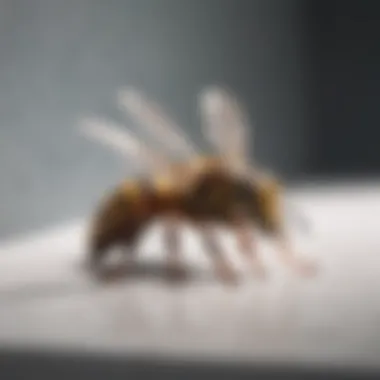
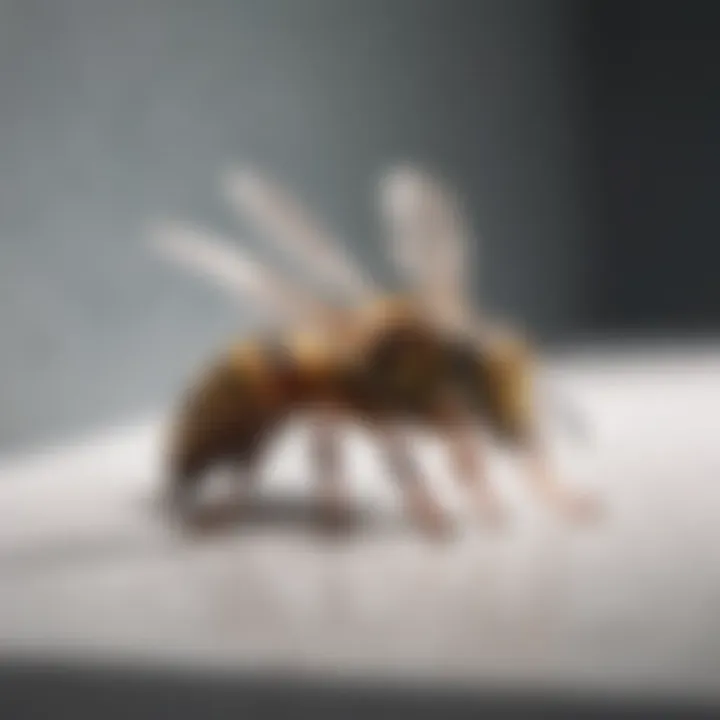
Removal Strategies for Hornets
The challenge of hornet infestations in bathroom vents cannot be overstated. Understanding appropriate removal strategies is essential not only for ensuring the safety and comfort of your home but also for responsibly addressing the ecological implications. This section will detail viable approaches to hornet removal, focusing on methods that cater to varying levels of infestation severity and the corresponding safety considerations.
DIY Approaches
For those who prefer handling pest issues on their own, DIY approaches can be both economical and effective. However, it’s crucial to approach this task with caution. Here are some methods commonly attempted by homeowners:
- Natural Repellents: Some household items can deter hornets effectively. Sprays made from essential oils such as peppermint, clove, or eucalyptus can be mixed with water to create a potent repellent. Simply fill a spray bottle and apply in areas where hornets are noticed.
- Trapping: Homemade traps can play a significant role in controlling hornet populations. Using a 2-liter plastic bottle, cut off the top and invert it into the bottom half. Fill with sugary liquid or soda to attract hornets and keep them trapped inside. Placement near entry points often yields successful results.
- Preventive Measures: Before any removal method, sealing up cracks and openings around your bathroom vent or window is a proactive step. Using caulk or mesh can effectively close off potential entry routes for hornets.
While these methods can be effective, they also come with risks. DIY approaches might provoke hornets, leading to aggressive behavior. Therefore, assessing your comfort level with the risk of stings is paramount.
When to Call Professionals
Sometimes, despite best efforts, infestations can grow more complex or hazardous. Recognizing when to call in experts is crucial for safeguarding not just the integrity of your home but also for ensuring personal safety. Here are signs that indicate it's time to reach out:
- Significant Infestation: If you notice a large hornet nest, especially one that seems to be thriving, it's best not to tackle it alone. Larger populations can pose risks during removal due to increased defensive behavior.
- Location Concerns: Ventilation systems or eaves can be tricky to access. If the nest is located in an area that’s hard to reach or poses a risk to your safety, it’s wise to defer to a professional.
- Previous Issues: If you've had hornets or other pests in the past and have tried DIY methods without lasting success, enlisting the help of a pest management professional might be your best option.
In such cases, expert pest control services bring not only their experience and tools but also knowledge of ecological practices to safely remove these insects without adverse effects on local ecosystems. This guidance can be invaluable for homeowners looking for long-term solutions to hornet issues while preserving backyard biodiversity.
Preventive Measures
When it comes to hornets nesting in bathroom vents, a proactive approach can save homeowners a lot of grief. Understanding preventive measures is vital not only to deter these insects but also to minimize potential hazards associated with their presence. This section covers the importance of sealing entry points and regular maintenance of vents—two crucial facets of prevention that can make a significant difference.
Sealing Entry Points
Securing entry points is one of the primary strategies in the fight against hornet infestations. Hornets are naturally drawn to small nooks and crannies, and your home offers plenty of those.
Here are some key points to consider when sealing those pesky entrances:
- Inspect for Gaps: Look around windows, doors, and vents for any openings. Even a tiny crack can be a gateway for hornets. Pay special attention to areas where pipes and wires enter the home—these tend to be hotspots for infiltration.
- Use High-Quality Materials: Opt for durable materials like silicone caulk or expanding foam. These options create a strong barrier that is hard for hornets to penetrate.
- Cover Vents with Mesh: Installing fine mesh screens over bathroom vents can be an effective way to block hornets while allowing for necessary airflow. It’s a simple yet effective solution.
Consider this: If the walls of your home are like a fortress, every little entry point is a potential crack in your defenses. By sealing them well, you can effectively keep hornets at bay.
Regular Maintenance of Vents
Regular maintenance of ventilation systems is another crucial element of your preventive arsenal. Think of it as routine health check-ups but for your home’s airflow. Here’s what to keep in mind:
- Clean Vents Periodically: Dirt and debris can accumulate in vents, creating a comfortable nesting space for hornets. Scheduling a clean-out every few months ensures that your vents are not just free of blockages but also inhospitable to pests.
- Inspect for Damage: Check for any signs of wear and tear in the venting system. If you notice a damaged vent hood or a broken section of ducting, address the issue promptly to prevent it from becoming a nest.
- Monitor Humidity Levels: High humidity can attract hornets as they seek out moist environments. Using a dehumidifier can help maintain an ideal humidity level in bathrooms, making it less appealing for hornets to crash your home.
"An ounce of prevention is worth a pound of cure." Keeping a vigilant eye on your entry points and performing regular maintenance can prevent a minor nuisance from evolving into a full-fledged infestation. Hornets may play a beneficial role in nature, but when they invade your bathroom vent, it’s time to take action.
Ecological Role of Hornets
Hornets, often the misunderstood members of the wasp family, hold a significant role in the ecosystem. Many might think of them as mere nuisances, especially when they invade spaces like bathroom vents, but they serve a purpose that spans far beyond their pesky reputation. Their role in our environment is crucial, touching upon various aspects of ecological balance, pest control, and biodiversity. This section will delve into the beneficial aspects of hornets, as well as their interactions with natural predators, highlighting their overall importance in maintaining a thriving ecosystem.
Beneficial Aspects
Hornets play a vital part in natural pest control. They are predators, and their diet primarily consists of other insects, including pests that harm gardens and crops. With every hornet buzzing around, there's a good chance they've contributed to keeping the population of harmful insects in check. For example, they feast on caterpillars, aphids, and even flies, which can ravage vegetable and flower gardens if left unchecked.
Additionally, hornets help facilitate pollination, even if that’s not their primary role. As they search for nectar, they inadvertently transfer pollen from one flower to another.
Here are a few key benefits of hornets:
- Natural Pest Control: They help reduce the numbers of harmful insects.
- Pollination: While not primary pollinators, their activity supports plant reproduction.
- Biodiversity: Their presence contributes to the robustness of ecosystems, allowing other species to thrive.
Thus, when considering hornets, it’s essential to see them from a broader ecological perspective, recognizing that they contribute to a balance that benefits not just their immediate environment but also agricultural systems.
Natural Predators
Hornets are also subject to predation themselves, creating a web of interactions within ecosystems. Their primary natural predators include birds, reptiles, and even certain other insect species.
Birds like the blue jay and sparrow hawks have been known to seek out hornets' nests, knowing that scavenging these nests can provide a protein-rich meal. Reptiles, such as lizards, can also feed on adult hornets when caught off guard. Additionally, other wasps and insects may compete with hornets for resources or prey on them when the opportunity arises.
This predator-prey dynamic illustrates the complexity of ecosystems. Every species, including hornets, exists within a network of relationships that sustains ecological balance. Understanding these connections emphasizes the need to respect each species’ role, including that of hornets, in maintaining a healthy environment.
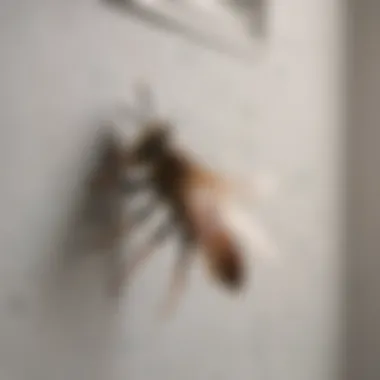
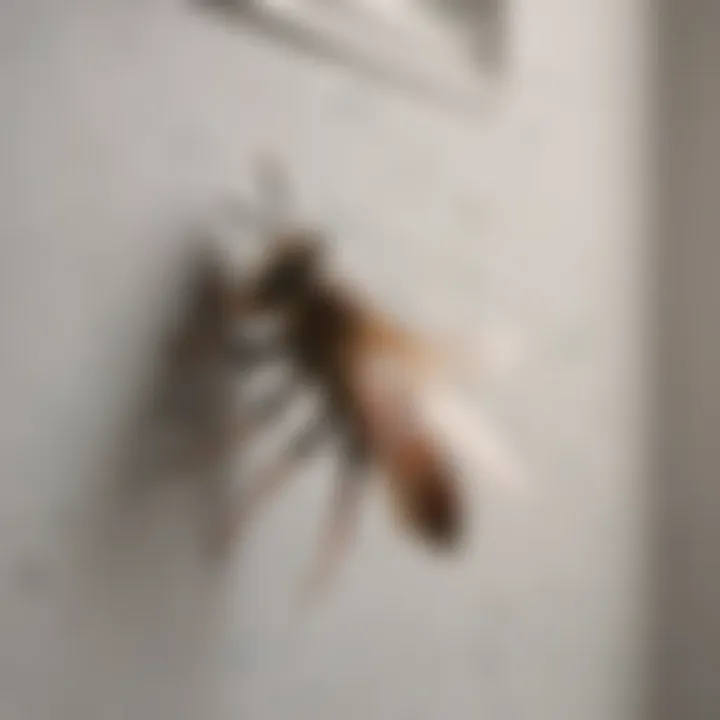
Case Studies of Hornet Infestations
Exploring case studies of hornet infestations provides a unique lens through which we can understand the complexities and implications of these intrusions in our living spaces. Each documented incident acts like a breadcrumb trail, leading us to lessons not just in pest management but also in awareness and preventive strategies. Homeowners, armed with real-life examples, can relate better and therefore implement solutions more effectively.
Documented Incidents
In recent years, several significant hornet infestations have been reported across residential areas, particularly in regions with warm climates. Here are a few key incidents worth noting:
- Incident in Idaho: A family discovered a nest hidden within the ductwork of their bathroom ventilation system, which led to multiple stings before they could even begin to address the issue. In this case, the absence of regular vent maintenance allowed the hornets to make themselves at home.
- Massachusetts Homeowner Alert: An infestation took hold in a two-story home where the bathroom vent was not properly sealed. The homeowner noticed unusual buzzing sounds and later found a nest that had grown extensively, requiring professional removal to secure the area.
- California Surprise Encounter: A contractor stumbled upon hornets while repairing a ventilation duct. The contractor was shocked by the sheer size of the nest, which had expanded due to previous neglect of the venting system. This incident highlights how quickly hornets can scale up, turning a small infestation into a much larger problem.
Each of these incidents underscores the necessity of vigilance, especially in homes with potential entry points for these pests.
Lessons Learned
Taking a closer look at these documented incidents reveals several crucial lessons for homeowners:
- Regular Maintenance is Key: Keeping ventilation systems clean and well-sealed can dramatically reduce the chances of hornet infestations. Regular inspections help catch potential problems before they become serious threats.
- Awareness of Surroundings: Homeowners should familiarize themselves with the signs of hornets, including unusual sounds, sightings of individual hornets, or nests. Early detection can save a lot of hassle.
- Know When to Act: Not all hornet infestations escalate to an emergency. Understanding when to handle it on your own and when to hire a professional can help manage both the situation and the stress involved. It’s tempting to DIY everything, but in cases of extensive infestations, experts can offer valuable experience and safety.
- Community Engagement: Sharing experiences with neighbors can foster a proactive community approach to pest management. Many homeowners might face similar challenges and can benefit from collective knowledge.
"An informed homeowner is a prepared homeowner. Staying alert and proactive can make all the difference in managing hornet issues effectively."
By taking these lessons to heart, homeowners can navigate the challenges posed by hornets in bathroom vents more effectively, safeguarding both their health and property.
Long-Term Solutions and Considerations
When it comes to dealing with hornets, especially those making themselves comfortable in bathroom vents, long-term solutions are crucial. These strategies not only tackle the immediate presence of hornets but also ensure that future intrusions are significantly minimized. Understanding the importance of these measures can save time, money, and a lot of headaches down the line.
Landscaping Considerations
The environment surrounding your home plays a significant role in attracting hornets. Landscaping choices can either deter or invite these pests. Here are a few key points to keep in mind:
- Plant Selection: Avoid flowering plants that attract hornets. Instead, consider using plants that are less appealing to them, such as certain herbs or evergreens.
- Spacing and Maintenance: A well-spaced yard reduces nesting opportunities. Trim back overgrown bushes and trees, which can serve as breeding grounds.
- Water Sources: Hornets are often drawn to water, utilizing it for their nests. Ensure that any stagnant water or ponds are treated or removed.
Incorporating these landscaping considerations can create an unwelcoming habitat for hornets, pushing them to seek other places for nesting.
Home Design Features
The design of your home can also dictate how susceptible it is to hornet infestations. Here are some elements to ponder:
- Ventilation Options: Investing in well-designed vent covers can act as a strong barrier against hornets. Ensure your bathroom vents are fitted with fine mesh screens that allow air to circulate while keeping pests out.
- Insulation and Sealing: Gaps and cracks in your home’s exterior can provide entry points for hornets. Regularly inspect and seal these openings using weather stripping or caulking.
- Consider Alternative Framing: If you're renovating or building, setting up a design that minimizes overhangs or eaves will discourage hornets from nesting near your home.
Overall, by adopting thoughtful landscaping practices and considering specific design features in your home, you can significantly enhance your defenses against hornets. This proactive approach not only maintains a safer living environment but also contributes to the overall aesthetics and health of your property.
"A well-planned landscape is akin to having a fortress. It repels unwelcome guests while welcoming those who belong."
By investing in these long-term strategies, homeowners can effectively navigate the challenges posed by hornets, creating a more comfortable and secure home environment.
Closure and Future Implications
The exploration of hornets within bathroom vents ultimately sheds light on a pressing concern that many homeowners face. Often underestimated, this issue can lead to both physical danger and structural hazards for properties. Recognizing the importance of addressing hornet infestations addresses the core of domestic safety and comfort.
Understanding the implications of such infestations can aid in proper preventive measures. Homeowners can better appreciate that hornets are not merely pests; they are part of a complex ecological web. Their presence can indicate broader environmental conditions that might need to be addressed. Furthermore, grasping the risks associated with hornet encounters—like painful stings and property damage—makes the case for proactive rather than reactive solutions.
By focusing on future implications, we can emphasize the need for ongoing vigilance throughout the year. This means not only managing current infestations but also preparing for potential issues before they arise. It highlights the necessity of continual inspection and maintenance of one’s property.
In a nutshell, being aware of hornets and their behavior not only aids in securing your home but also enhances one’s relationship with the environment. There’s a wisdom in understanding our surroundings that extends beyond immediate reactions. This knowledge can foster a responsible approach to living harmoniously with wildlife while protecting our homes from possible threats.
Summarizing Key Points
To wrap it up, several key aspects resonate throughout this article:
- Ecological Awareness: Hornets play a role in their ecosystem, which, while often annoying, is integral to food webs and pest control.
- Signs of Infestation: It is crucial for homeowners to recognize the signs of a hornet population, such as nest physicality and changes in behavior.
- Health and Safety Risks: Disturbances can lead to serious health risks, underlining the necessity of prompt action.
- Effective Removal and Prevention: Understanding how to safely remove hornets, alongside preventive actions, is paramount to maintaining a secure home environment.
Given these points, knowledge becomes the route to empowerment in the face of potential pest challenges. The advice provided forms a practical toolkit for homeowners to navigate this issue.
Emerging Trends in Pest Management
Modern pest management constantly evolves. Homeowners must stay abreast of methods that prioritize safety and environmental considerations. Some notable trends include:
- Eco-Friendly Treatments: More homeowners are turning to biodegradable and non-toxic treatments that are effective against pests, minimizing environmental impact.
- Integrated Pest Management (IPM): This approach combines various strategies, including habitat manipulation, biological control, and monitoring. It aims to reduce hornet populations while respecting ecological balance.
- Technological Innovations: Sensor-based notifications for detecting infestations are becoming more popular. Homeowners can receive alerts about pest activity, allowing for quicker interventions.
- Community Awareness Programs: Engaging local community programs assists homeowners in understanding pest management collectively, fostering greater awareness about hornets and other backyard wildlife.
As we look ahead, aligning pest management strategies with sustainability will be crucial. Finding the balance between protecting homes and preserving natural habitats represents not just a challenge but an opportunity for better coexistence. By adopting these emerging trends, homeowners can facilitate a harmonious environment for both themselves and the insect world they share it with.















